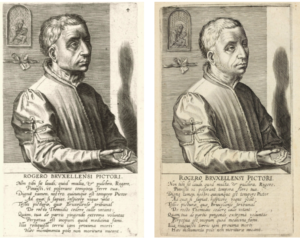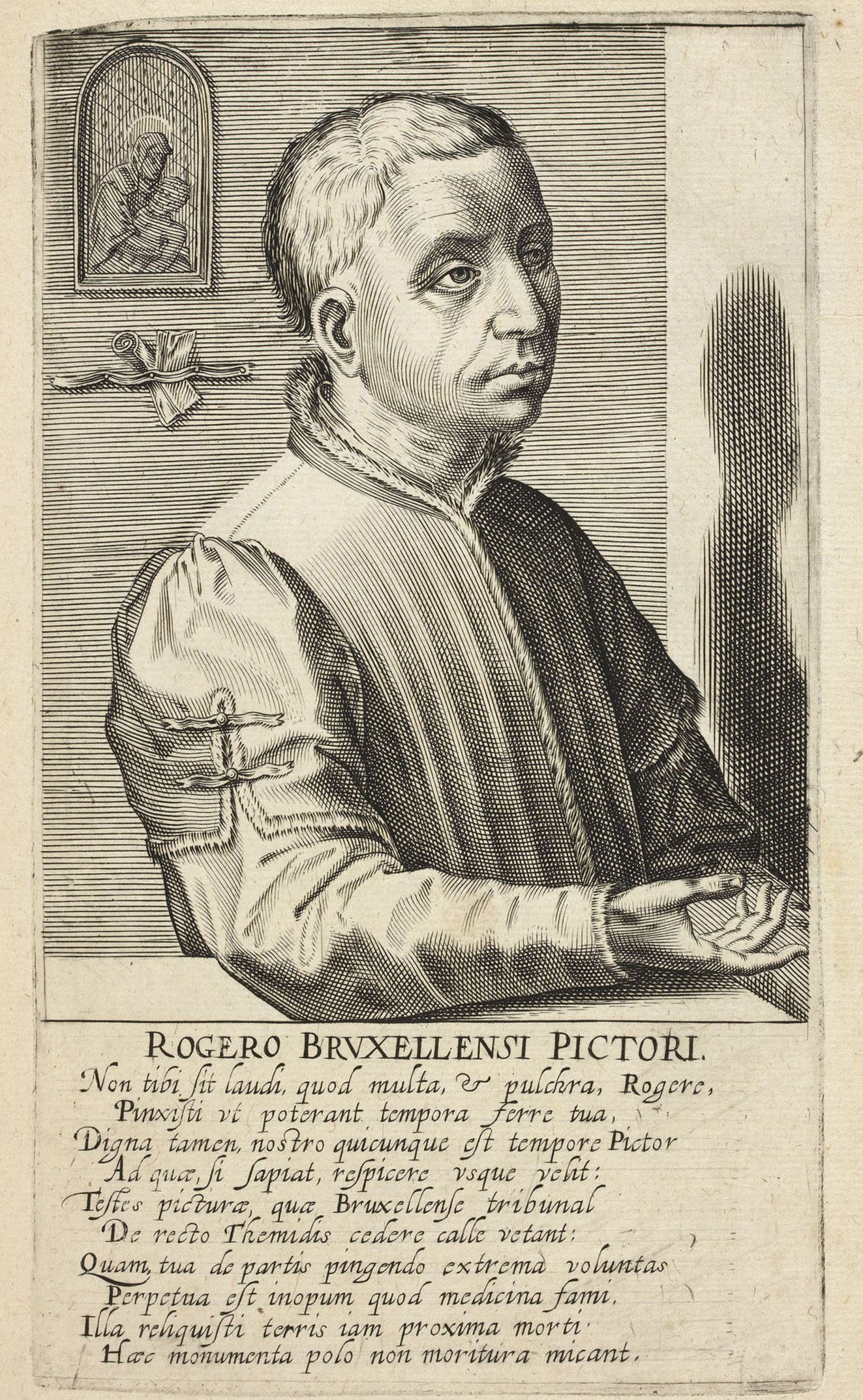Engraving
Attributed to Hendrick Hondius
Copy in same direction as Cock 1572 engraved Pictorum
21.0 x 12.1 cm
Transcription of Inscription [Lampsonius]:
ROGERO BRUXELLENSI PICTORI.
Non tibi sit laudi, quod multa, et pulchra, Rogere,
Pinxisti ut poterant tempora ferre tua,
Digna tamen, nostro quicunque est tempore Pictor
Ad quae, si sapiat, respicere usque velit :
Testes picturae, quae Bruxellense tribunal
De recto Themidis cedere calle vetant :
Quam tua de partis pingendo extrema voluntas
Perpetua est inopum quod medicina fami.
Illa reliquisti terris iam proxima morti ;
Haec monumenta polo non moritura micant.
Translation of Inscription [Lampsonius]:
To Rogier van der Weyden, painter.
May your praise not be that you painted many beautiful things, as your age could bear them 1 (although they are worthy that anyone who is a painter in our time wish greatly to look at them, if he be wise – the paintings which forbid the tribunal of Brussels to leave the straight path of Justice are witness [to this]): but rather that your last will is a perpetual remedy for the hunger of the poor from the proceeds of your painting. The former, [itself] already near to death, you left on earth; the latter shines in the sky, as a monument that will not die.2
Hollstein 1994 no. 86
Karel Van Mander’s biography of Rogier van der Weyden
Grove Art Online biography

View the 1572 print
View both prints side by side
Footnotes:
- The sense seems to be that Rogier painted as well as he could for his time. Compare to poem on Jan Gossaert
- The point seems to be that Rogier’s paintings will pass away, like all earthly things, whereas his works of mercy will gain him eternal life, and therefore last forever.


